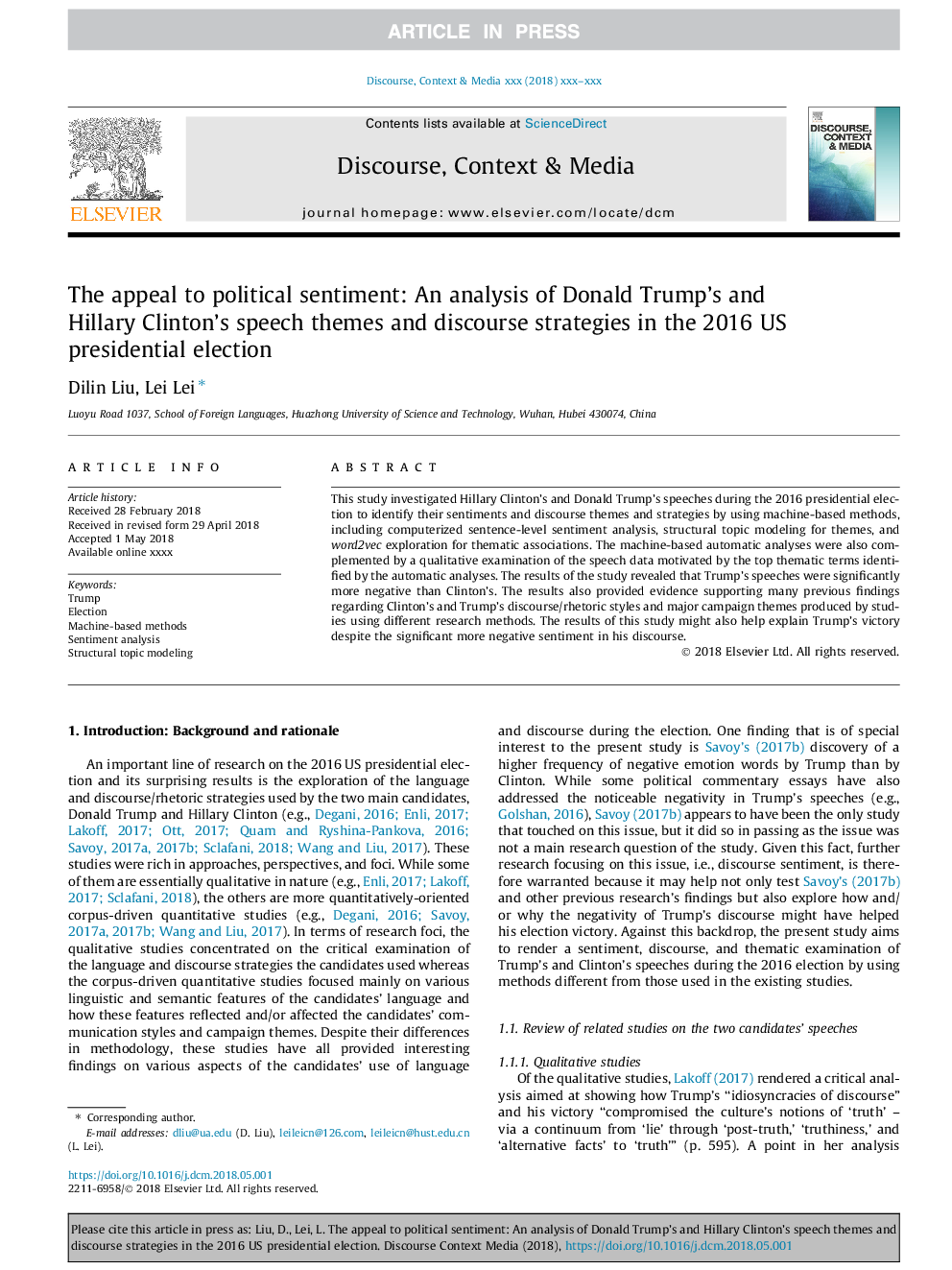| Article ID | Journal | Published Year | Pages | File Type |
|---|---|---|---|---|
| 10154275 | Discourse, Context & Media | 2018 | 10 Pages |
Abstract
This study investigated Hillary Clinton's and Donald Trump's speeches during the 2016 presidential election to identify their sentiments and discourse themes and strategies by using machine-based methods, including computerized sentence-level sentiment analysis, structural topic modeling for themes, and word2vec exploration for thematic associations. The machine-based automatic analyses were also complemented by a qualitative examination of the speech data motivated by the top thematic terms identified by the automatic analyses. The results of the study revealed that Trump's speeches were significantly more negative than Clinton's. The results also provided evidence supporting many previous findings regarding Clinton's and Trump's discourse/rhetoric styles and major campaign themes produced by studies using different research methods. The results of this study might also help explain Trump's victory despite the significant more negative sentiment in his discourse.
Keywords
Related Topics
Social Sciences and Humanities
Arts and Humanities
Language and Linguistics
Authors
Dilin Liu, Lei Lei,
